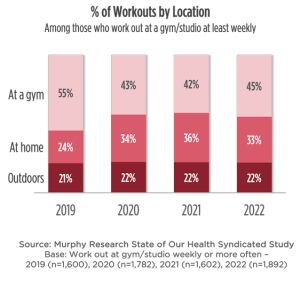 In recent history, few events have left as indelible a mark on the course of human life as the COVID-19 pandemic. Beyond its immediate health implications, the pandemic brought about a seismic shift in the way we live, work, and interact with the world around us.
In recent history, few events have left as indelible a mark on the course of human life as the COVID-19 pandemic. Beyond its immediate health implications, the pandemic brought about a seismic shift in the way we live, work, and interact with the world around us.
As our societies adapted to what was described as a “new normal”, the reliance on technology exploded, propelling us into an era where virtual connections became the lifeblood of our existence.
In this transformative journey, every facet of our lives underwent a remarkable metamorphosis. Education, once confined to the four walls of classrooms, migrated to fully digital platforms, bringing with it both completely new opportunities and unforeseen (and sometimes difficult) challenges.
Fitness routines, once synonymous with gym sessions and outdoor activities, found a new home in virtual workouts, talking mirrors, live action gaming equipment, and fitness apps.
In-person socialization faded, replaced by the glow of screens connecting us across distances. Suddenly social media became a full replacement to conversations in the park or at the coffee shop. Even entertainment, traditionally confined to theaters and concert halls, managed to transcend barriers through streaming services and virtual events.
However, amidst the marvels of this technological revolution, a subtle reminder emerged: moderation is STILL the key. While the digital realm offered unparalleled convenience and accessibility, it also beckoned us with the pitfalls of overindulgence. Sure, we were forced to remain within our homes for so long, as so many businesses and places we frequented were closed but was this REALLY the new norm? Were people drawn to the conveniences of technology so greatly that once the pandemic was over, they’d never return to the way things were? Or were people so desperate to get back to the way that things were before that they lost the value of the lessons that it taught us?
As we explore the profound lessons from the surge in technology, it becomes evident that harnessing these digital tools to their fullest potential necessitates a delicate balance…one that demonstrates the traditional value of person-to-person contact as well as the newfound resources within this technological boom.
One truth resonates clearly: the digital age is upon us, and it is here to stay.
The Transformation of Education
Perhaps the largest technological transformation during the pandemic occurred within the classroom.
Students across the world were catapulted into a digital environment; many of which had absolutely no experience in asynchronous learning. Even more disturbing, many teachers had no experience teaching in an asynchronous classroom and administration was not prepared for what was about to happen within their districts.
Much of the disparity in education was found within the higher poverty level schools. Students were unable to access reliable internet at home, did not have access to proper equipment, and often were unable to receive the assistance they needed to remain active in the classroom (NPR, 2022).
“Most schools had little to no experience with remote instruction when the pandemic began; they lacked teacher training, appropriate software, laptops, universal internet access and, in many cases, students lacked stability and a supportive adult at home to help” (NPR, 2022)
The technology and resources were there to succeed for those who could afford them, but for those who couldn’t – suddenly education was nearly impossible to achieve.
While it can be said that a lack of preparation for these circumstances is the reason behind the “generation of lost students” during the pandemic, what are the true effects of this missing academic time, and can it ever be recovered?
Since the pandemic, schools around the country have changed dramatically.
Whereas it is not widely publicized, many schools have adopted a new policy where students can choose – online or in person instruction. Others have opted for a more hybrid approach: students have a couple of days of in person instruction, and a couple of days of at home, online instruction. It’s vital that students have the option to be in person if that contact is important to them and their mental well-being.
When discussing how dramatically the educational environment has changed since the pandemic, Marcella Bombardieri, Senior Fellow at the American Progress stated, “education needs a massive reinvestment, technology is now a basic need” (Politico, 2021). “It’s not an option any longer: it is truly a necessity”.
While online education is now a vital piece to the learning environment, there is still pushback. People complain that they are overstimulated by the “digital world” and feel that online learning can be more of a burden than a complement to the learning experience.
Where does this over stimulus originate?
An abundance of digital diversions like excessive binge-watching of Netflix, TikTok, video games, social media, etc. Here is where the word moderation enters the conversation: we need to minimize the “digital time wasters” and capitalize on online learning. Would people really feel overstimulated from an overindulgence of education?
A Fitness Metamorphosis
Once synonymous with the outdoors, sports, going to the gym, and simply having fun, pandemic fitness routines suddenly turned into YouTube videos on your living room rug, talking mirrors, and riding your Peloton up to Machu Pichu on video with a live trainer.
 Fitness changed exponentially during the pandemic when local gyms were shuttered, parks were roped off, and even our own martial arts classes were closed.
Fitness changed exponentially during the pandemic when local gyms were shuttered, parks were roped off, and even our own martial arts classes were closed.
Innovation and technology clasped hands and we were off to the races, trying to figure out how we could stay fit within our four walls.
As you can see by the graph, many consumers have adopted a home gym as an option versus going to an outside club/gym for fitness since the pandemic has ended. But with the convenience factor, what is the real cost?
This increase in training at home has created a sense of complacency: many consumers don’t realize the dangers of removing variety in a workout. By repeating the same fitness routines over and over, your progress will most likely plateau, your potential for injury increases, and your motivation wanes (Magat, 2020).
Discovering a workout regimen that encompasses a structured, gradual enhancement in flexibility, agility, overall fitness, and the intellectual stimulation inherent in martial arts training within an online setting fulfills all these criteria.
The martial arts educators at Believing Through Achieving, each boasting over 25 years of experience in guiding students across diverse fitness levels, devised and validated a martial arts program as an alternative to their in-person classes during the pandemic. Students who participated in this online approach exhibited substantial improvements compared to their previous in-studio sessions.
Upon witnessing these remarkable results, our instructors analyzed the online education model and resolved to refine it even further. BTA’s online martial arts program has fully embraced the progressive learning model, offering students a step-by-step journey towards heightened physical, mental, and emotional fitness, as well as mastery in martial arts.
So, what is “The New Normal”?
In this era of unprecedented technological advancement, our quest for a new normal demands a delicate balance between harnessing the digital world’s power and taming its potential distractions. Throughout human history, this struggle between the beneficial and the convenient has remained a constant theme.
Today’s digital age presents us with a unique challenge. The allure of endless information, instant gratification, and constant connectivity can overwhelm us, blurring the line between productivity and distraction.
Finding our equilibrium necessitates mindfulness. We must learn to utilize technology’s capabilities for personal growth, education, and meaningful connections while resisting the overwhelming call of endless scrolling, binge-watching, and virtual indulgence.
Embracing our new normal means acknowledging the unprecedented opportunities and challenges technology has brought to our lives. It’s about using digital tools to enhance our existence rather than letting them dominate and overtake our time and attention. Striking this balance will be the hallmark of our ability to thrive in the digital age and define our unique path forward.
References
Magat, B. (2020). The Importance of Variety in Creating Your Exercise Program. The Science of Health. Retrieved from https://www.uhhospitals.org/blog/articles/2020/08/the-importance-of-variety-in-creating-your-exercise-program#:~:text=By%20creating%20variation%20and%20changing,your%20injury%20risk%20will%20decrease.
NPR. (2022) 6 Things We’ve Learned About How the Pandemic Disrupted Learning. Retrieved from https://www.npr.org/2022/06/22/1105970186/pandemic-learning-loss-findings
Politico. (2021). COVID-19 Changed Education in America-Permanently. Retrieved from https://www.politico.com/news/2021/04/15/covid-changed-education-permanently-479317






